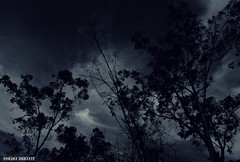Edit or not to edit?
May 15, 2011 Leave a comment
After my three shoots and i had got the photographs that i originally set out to find, i began to think about how the images would look, if they should be in colour, B&W or bleached out completely. I started to think about the meaning behind the images and the importance of them being aesthetically pleasing. I even tried whitening the images to near incomplete unsightlyness. I wanted to find a way to show that the space in the middle is the important punctum of the photograph, i didnt want the viewer to miss out on the entire point of my photographs, so i tried this:
I put the image in photoshop put a layer of white underneath the image and then changed the opacity to fade away the photograph.
After looking at the result of this photograph and thinking about the theme within this project, the idea of space within different enviroments and its being shaped by different barriers no matter which landscape we look at, i began to realise that i had photographed the mundane, i had photographed spaces that weren’t inherently special, but were unique and individual to the project and there by they were important and becasue of this ‘fact’ , they should be left completly untouched. Perhaps with only the lightest of touches in photoshop involving a crop tool and curves. The tempatation to glamourise them was very strong intitally but i think that it would have been untrue to the project to do so.
I also began to think about how they would be displayed at the exhibition in The Print Space in London on 6th-17th June 2011. I thought about alot of different methods, small, large, miniscule or even in a minimalistic sculpture of some kind. However the two very simple ideas stuck and they are what i am currently deciding on putting together.
Themes:
- Prints – traditional but clear and concise with a static status which isn’t always acheived with video
- Video- modern, but with the added bonus of being able to entice the spectator with auditory effects as well


























